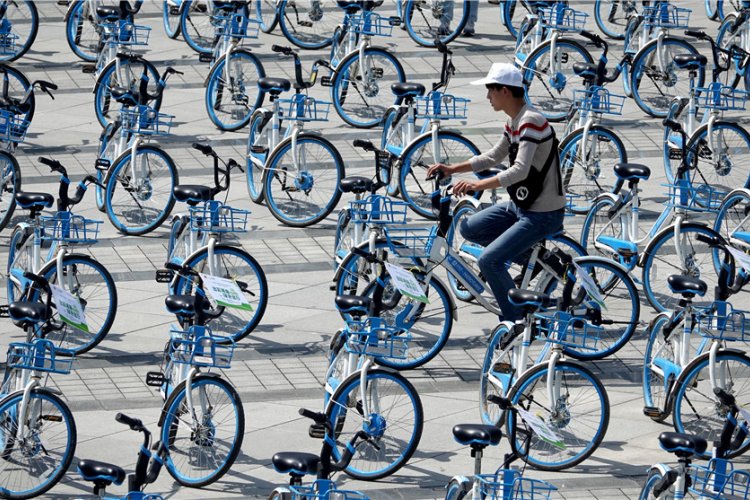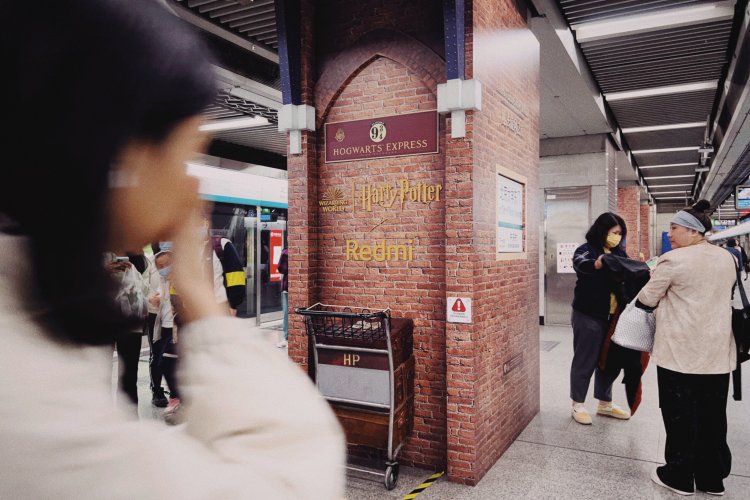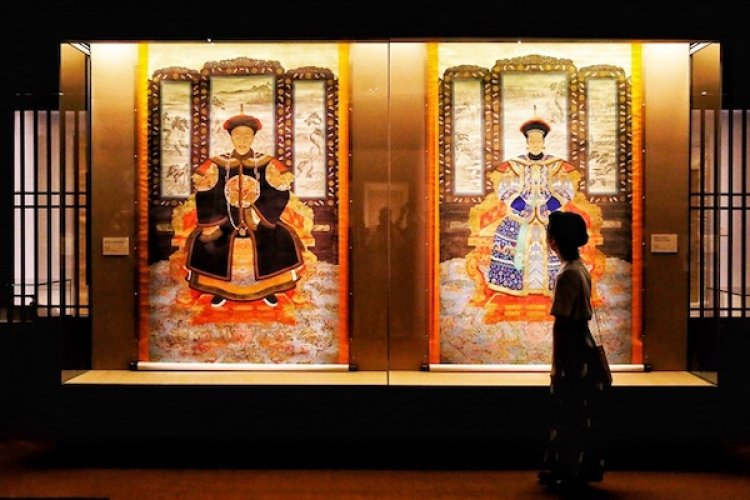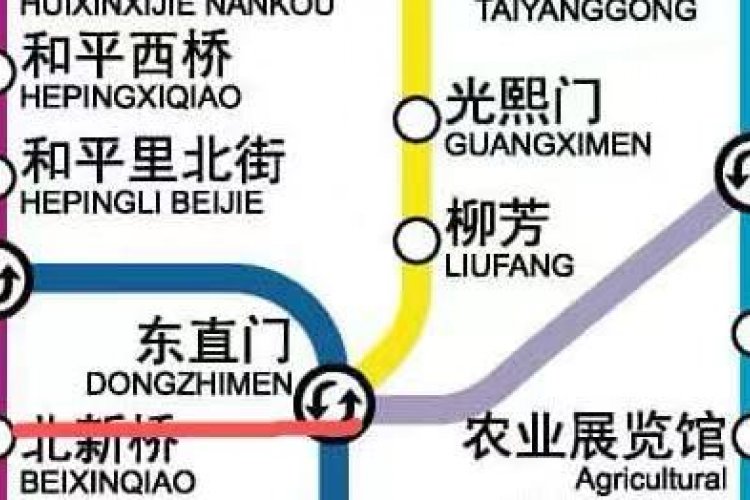Line 6 Goes West: What to See Around Beijing's Newest Stations
Beijing has recently welcomed six new additions to its ever-expanding subway system: western-end stations of Line 6 that provide curious Beijingers easier access to some of the capital’s more remote historic sites (not to mention making commuting a whole bunch easier for those who live on that side of town).
The western extension of Subway Line 6 opened on Dec 30, 2018 with an expanded six underground stations from the previous terminus and transfer station of Haidian Wuluju 海淀五路居站. They are (east-to-west):
- Tian Cun 田村
- Liaogong Zhuang 廖公庄
- Xihuang Cun 西黄村
- Yang Zhuang 杨庄
- Pingguoyuan 苹果园 (transfer to Line 1, currently closed)
- Jin’anqiao 金安桥 (transfer to the S1 Line)
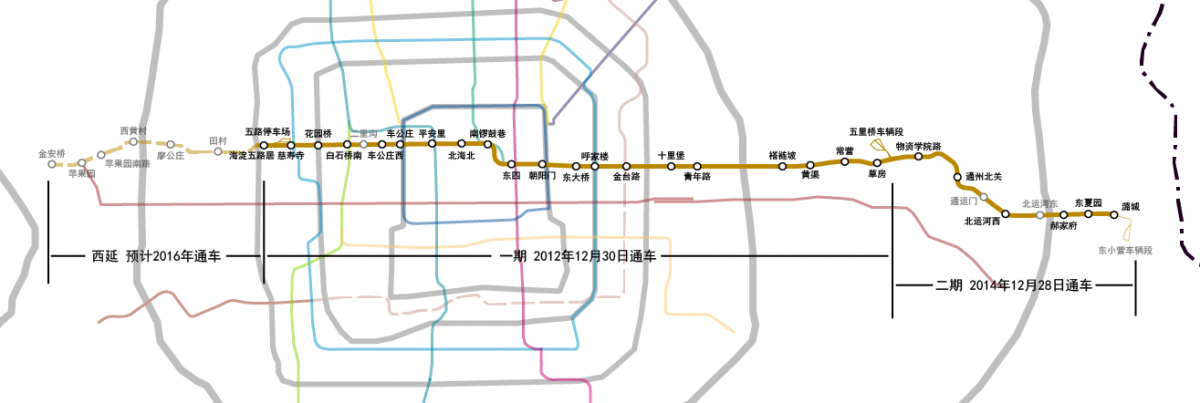
The 10.3km extension links Shijingshan District to the city’s main subway arteries and helps accommodate more commuters from western neighborhoods who were previously only served by Line 1 and the S1 maglev line. Note that trains currently do not stop at the Pingguoyuan transfer station, as subway authorities are preparing upgrading work to allow the Line 1 interchange, that will begin in February 2019.
East of Pingguoyuan, the stations Yang Zhuang, Xihuang Cun, Liaogong Zhuan, and Tian Cun serve dense residential areas between the Northwest Fourth and Fifth Ring Roads. Meanwhile, the current terminus Jin’anqiao Station is linked to the low-speed S1 maglev line that runs further west to Mentougou District. From the terminus, there are several places of interest for Beijingers wanting to explore the western suburbs of the capital for day trips. Some notable sights are listed below.
Note: The first eastbound train from Jin’anqiao to Lucheng leaves at 5.08am. The last eastbound train is at 10.25pm.
The Quaternary Glacial Relics Exhibition Museum of China

Dubbed in China as the "world’s only display hall of glacier relics," the Quarternary Glacial Relics Exhibition Museum houses stone samples and photographs of relics from the Pleistocene glacial period, known as the "Ice Age" in Earth’s history. The museum’s display hall itself is situated beside a glacier site first discovered by a Chinese geologist in 1954, which was subsequently listed as a cultural heritage protection unit by the Beijing municipal government.
The museum was first opened in 1987 and has since been expanded to its present 4,200sqm area to accommodate 48 rare collections, including fossils of mammoths, that help visitors understand the history of ice ages, as well as the relationship between humans and climate change. The spacious area also means the museum can be used for workshops or summer camp activities for primary to middle school pupils.
The Quaternary Glacial Relics Exhibition Museum of China
Tue-Sun 9am-4pm. RMB 10 (adults), RMB 5 (students). 28 Moshikou, Shijingshan District (8872 2585)
中国第四纪冰川遗迹陈列馆:石景山区模式口28号
Fahai Temple (法海寺)

Heading north of the Quarternary Glacial Relics Exhibition Museum will bring you to the Fahai Temple. Built in 1439 by an imperial eunuch, the temple is described as having China’s most complete and largest Ming dynasty murals and frescoes comparable to that of the Mogao Caves in Dunhuang, Gansu Province.
The 236.7-meter mural area shows various Buddhist folklore, including meticulously painted images of the “Ten Buddhists” and has been kept intact for more than 560 years due to the ancient artists’ craftsmanship and quality of paint they used. Temple caretakers have also made efforts to keep natural light from coming to the frescoes to maintain the quality of the painting.
Aside from the murals, visitors can also see centuries-old bronze bells and white-bark pine trees believed to have been standing there for a thousand years. The temple is situated at the foot of Cuiwei Mountain in Shijingshan, so a short temple visit could also double as a nature excursion.
Fahai Temple
Tue-Sun 9am-4.30pm (winter), 9am-5pm (summer). RMB 20 (entrance), additional RMB 100 for an English-speaking guide. RMB 10 (students). 28 Moshikou Village (at the southern foot of Cuiwei Mountain), Shijingshan District
法海寺 :石景山区翠微山南麓模式口28号. (8871 5776)
Cheng’en Temple

Founded during the Sui Dynasty (581-618), this Buddhist temple has been rebuilt several times. The current complex includes stone Buddha sculptures and clock and drum towers that date from the early 1500s. Legend has it that the temple was built by eunuchs and served as a military and spy base during the Ming Dynasty.
The Cheng’en Temple has been transformed into a folk art museum, housing an important collection of religious murals and arts. The temple is currently closed for renovation but there are local tourists who have entered it and said the collections and murals are well preserved.
Cheng’en Temple
20 Moshikou Street, Shijingshan District
承恩寺:石景山区模式口大街20号
READ: Beijing’s Prettiest Subway Stations
This article originally featured on our sister site beijingkids.
Photos: news.ynet.com (featured photo), Beijing Tourism, Visit Beijing, Dirrival via Wikimedia Commons


